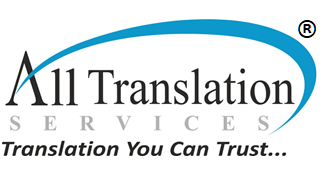From Local to Global: Transforming Your YouTube Channel with Video Translation Services
The world is a vast and interconnected space, and YouTube reflects that beautifully. It’s a platform brimming with content creators reaching audiences across borders and languages. But if your channel’s content is currently limited to one language, you’re missing out on a massive potential viewership. Here’s where YouTube video translation services come in, acting as the key to unlocking a global audience for your YouTube channel.
Ready to take your YouTube channel global? Look no further! We offer top-tier video translation services in over 270 languages, allowing you to connect with audiences worldwide. Our team of expert translators and cultural consultants ensures accurate, engaging content that resonates with viewers across borders.
The Importance of Video Translation
YouTube is not just a video-sharing platform; it’s a vibrant community speaking hundreds of languages and dialects. For creators, this diversity presents both a challenge and an opportunity. While English might be widely understood, content that is available in multiple languages can drastically increase viewership and engagement. This not only boosts channel statistics but also enhances advertising revenue and brand recognition on a global scale.
Translating your videos can:
Broaden your audience exponentially.
Increase the accessibility of your content.
Improve viewer engagement by providing content in the viewer’s native language.
Give you an edge over competitors by reaching markets they may not cater to.
Choosing the Right YouTube Translation Service
The process of translating YouTube videos involves two key components: subtitles and voiceovers. Each method has its benefits and choosing the right one depends on your content, budget, and target audience.
Subtitles and Captioning are the most cost-effective method of translation. They allow viewers to read along in their language while listening to the original audio. This method preserves the original performance and tone of the content, which is particularly important for channels where personality and presenter charisma are central to the content.
Voiceovers and Dubbing Services, on the other hand, involve recording over the original audio with a new track in a different language. This can be more engaging for narratives or educational content where ease of understanding is crucial, but it can also be more expensive and less authentic to the original delivery.
To select a suitable service, consider the following:
Quality and Accuracy: Professional translators who are fluent in the source and target languages and understand cultural nuances can provide translations that resonate more deeply with international audiences.
Turnaround Time: Depending on your publishing schedule, you’ll need a service that can deliver high-quality translations in a timely manner.
Cost: Budget constraints are real, especially for smaller channels. Weigh the potential ROI of reaching broader audiences against the initial investment in translation services.
Ease of Integration: Some services offer seamless integration with YouTube, making the process of adding translated subtitles or voiceovers easier.
Tools and Technology in Translation
Several tools can aid in translating YouTube videos. YouTube’s own automatic captioning service provides a basic tool, but for more accurate and professional results, relying on specialized translation software or services is recommended. Tools like Amara and Dotsub offer platforms where translators can work directly on your videos, ensuring that the subtitles sync perfectly with the audio.
In addition to software, leveraging artificial intelligence (AI) in translation is becoming increasingly popular. AI can speed up the translation process and reduce costs. However, human oversight is still necessary to ensure that the translations maintain the original tone and context.
Implementing a Global Strategy
Having your videos translated is just the first step. To truly globalize your YouTube channel, consider the following strategies:
Cultural Localization: Ensure that your content is culturally relevant and sensitive to the audiences you are targeting. This might involve more than language translation; sometimes, content needs to be adapted to reflect local customs and sensibilities.
Marketing and SEO: Use multilingual SEO strategies to ensure that your videos are discoverable in different regions. This includes using the right keywords in multiple languages in your video titles, descriptions, and tags.
Feedback Loop: Engage with your international audience and solicit feedback to improve future translations. Understanding their preferences and experiences can guide better content creation and localization strategies.
Regular Updates: Language is dynamic, and so are cultural trends. Keep your translations and content strategy up to date by revisiting and revising them regularly.
Conclusion
Expanding your YouTube channel from local to global through video translation services can seem daunting, but the potential rewards are immense. By making your content accessible and engaging to a worldwide audience, you not only increase your viewership and revenue potential but also join a global community of content creators and consumers who share, innovate, and grow together. In today’s digital world, barriers are meant to be crossed, and with the right tools and strategies, your YouTube content can resonate across continents and cultures, turning local dialogues into global discussions.
Don’t limit your reach. Let us help you unlock the full potential of your YouTube channel. Contact us today to discuss your translation needs and take your content from local to global!
